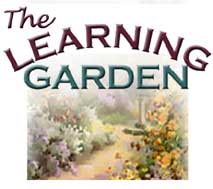
From Seed to Seed:
Plant Science for K-8 Educators
 |
From Seed to Seed: |
|
|
Knowing what we now do about the close relationship between plants and people, it comes as no surprise that when people move around, they take their plants along with them. One consequence of this is the presence of foreign plants in the many lands that have been inhabited by people. As we will learn in this next section, sometimes their presence can have disastrous effects. D. Invasive Plants What exactly is an invasive plant? Is there a difference between non-native and invasive plants? Non-native plants, also called aliens or exotics, are those plants that have been introduced into an area in which they previously had not been found. Historically, plants have been introduced both accidentally and intentionally. In the literature on non-native plants is a story of a 5200-year-old iceman discovered on the Italian-Austrian border with grass stuffed into his shoes. Although he was probably just trying to keep his feet warm, he was moving seeds from one area to another. Most of the time the story of plant introductions is not this interesting. Plants have usually arrived accidentally in new areas by hitchhiking on farm equipment, in impure batches of seed, or in the ballast of ships. Throughout history, people have also moved plants around the earth on purpose. Especially in the "Plants and People" section of this course, we have learned of the value that plants have in people's lives. As a result, when people move around they carry with them the plants that they use for food, medicine, and ornament. For example, as new lands were colonized, new plants were introduced in order to make the colonists feel at home. Likewise, when explorers returned home from their voyages, they brought with them exotic plants from faraway lands. More recently, plants have been introduced for agricultural or gardening purposes and for erosion control. Although non-native plants don't necessarily "belong" in the areas |
||||
|
Made possible by a grant from Oracle Corp. Copyright 2001, National Gardening
Association, Inc. For questions regarding this web site, contact Webmaster |